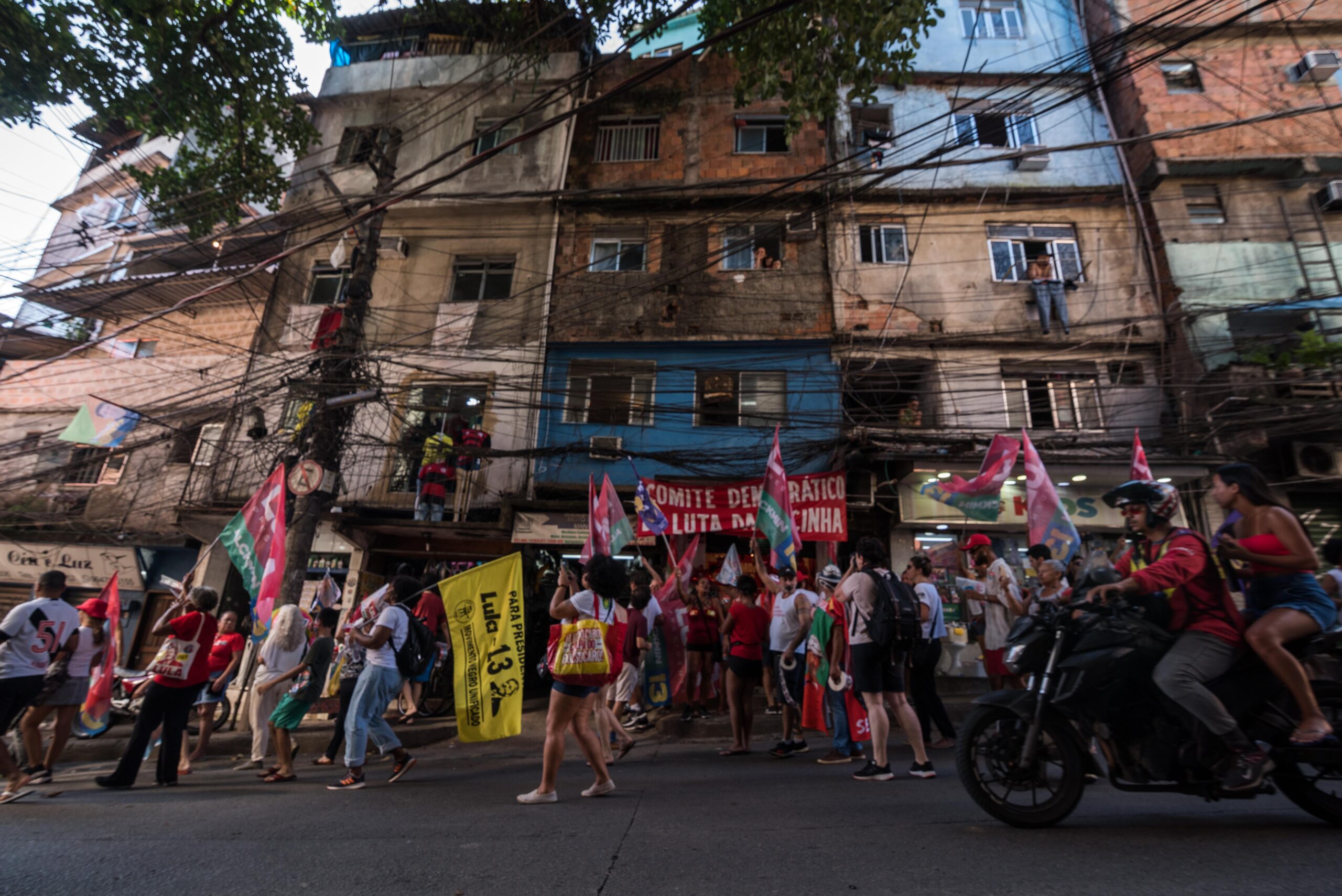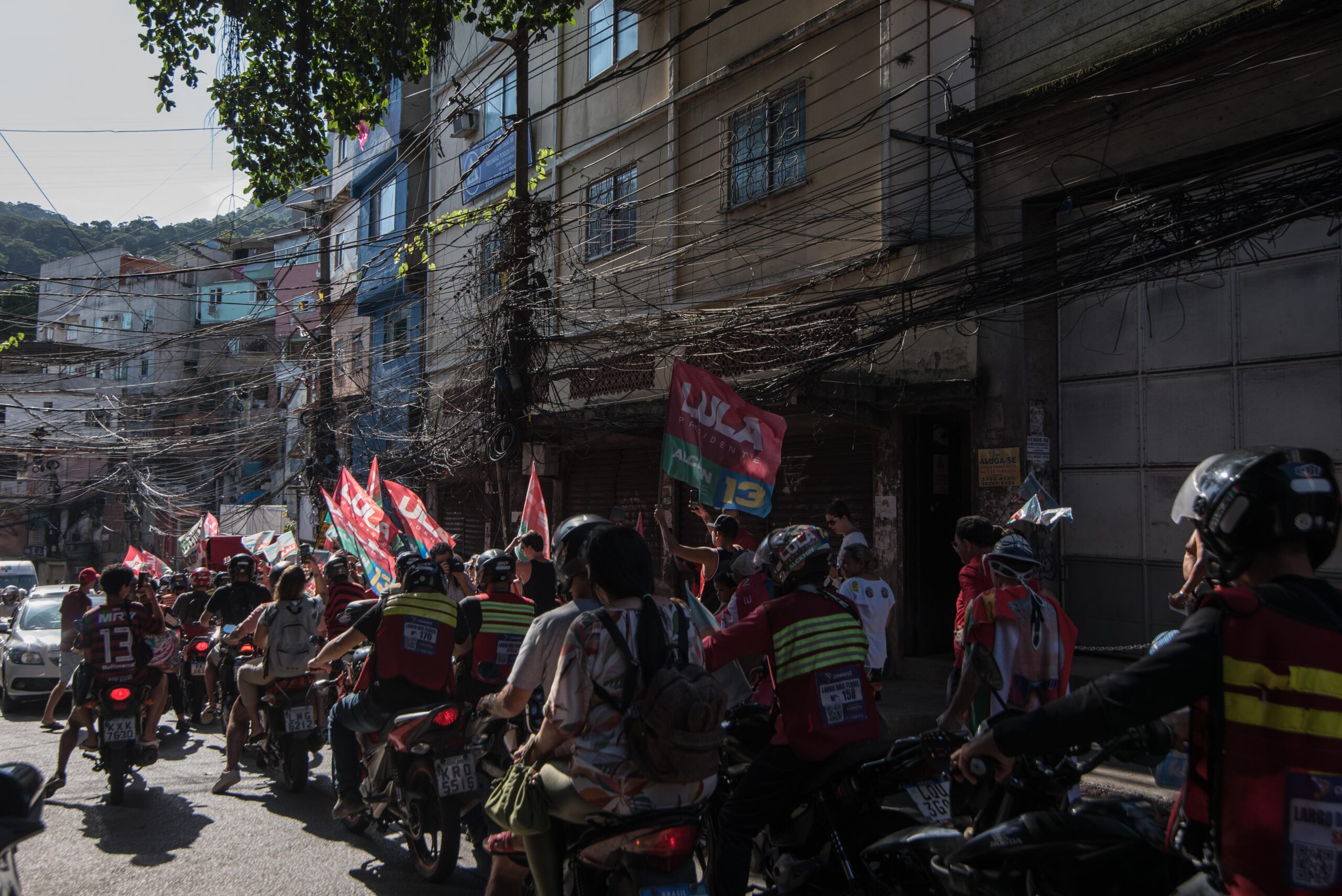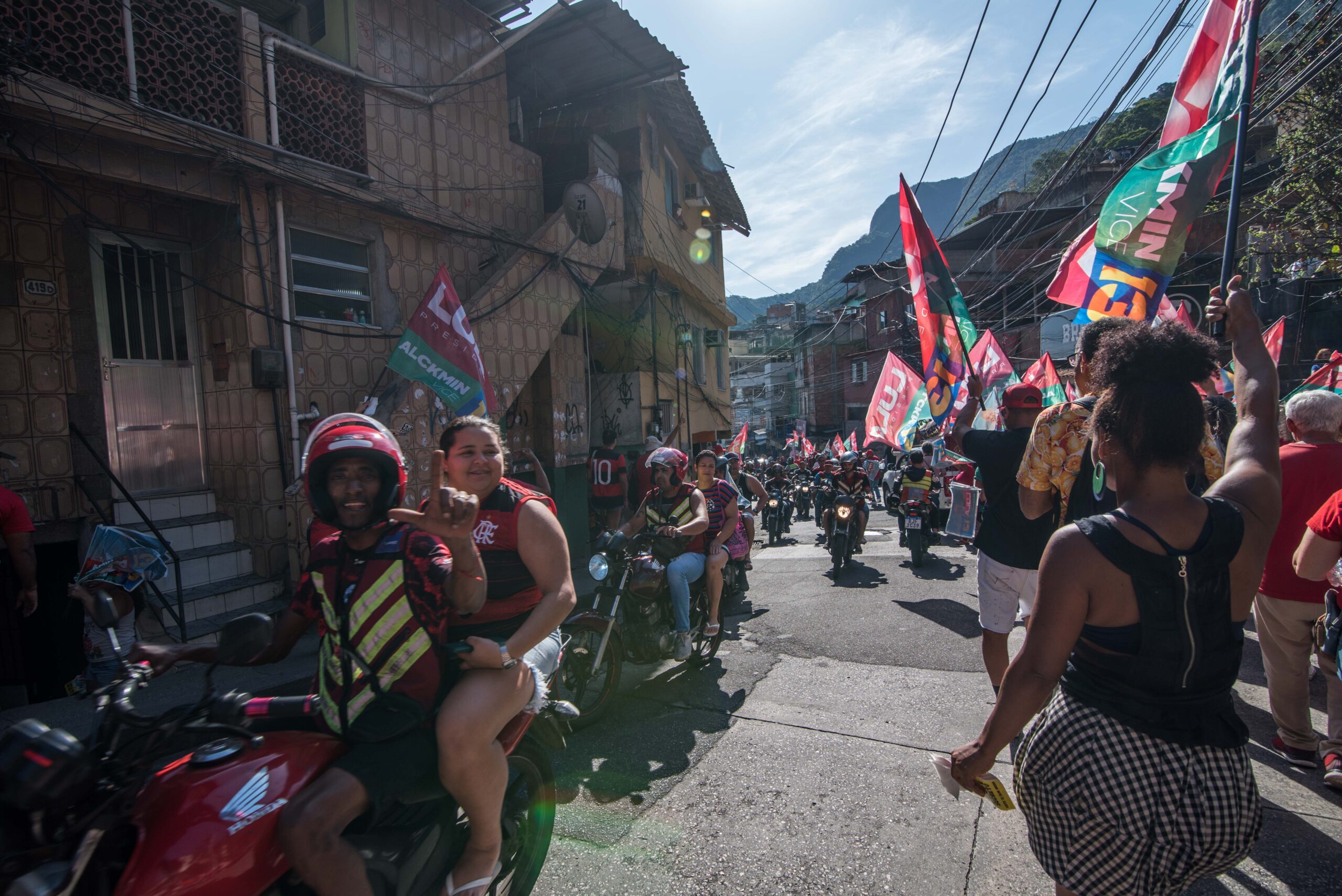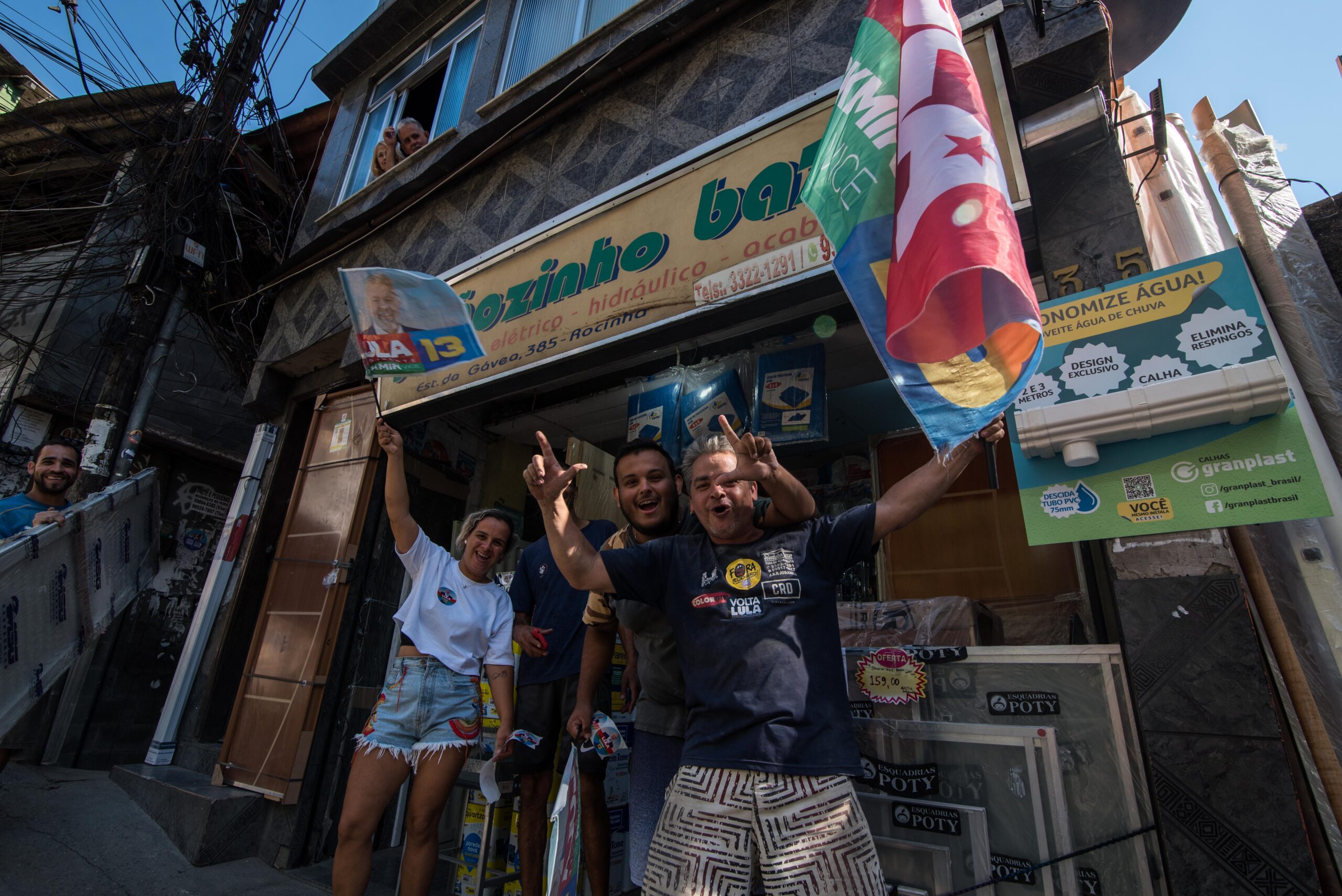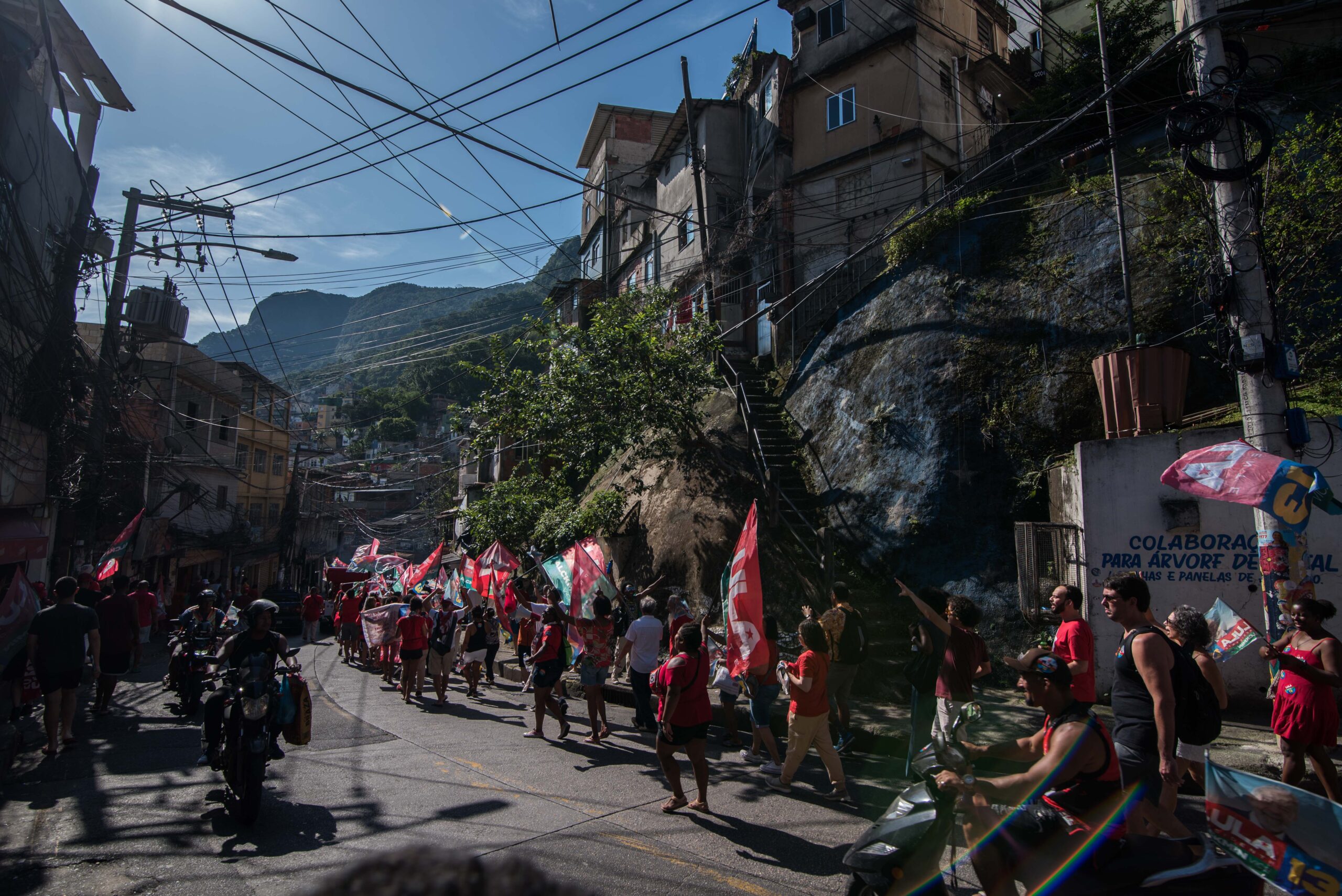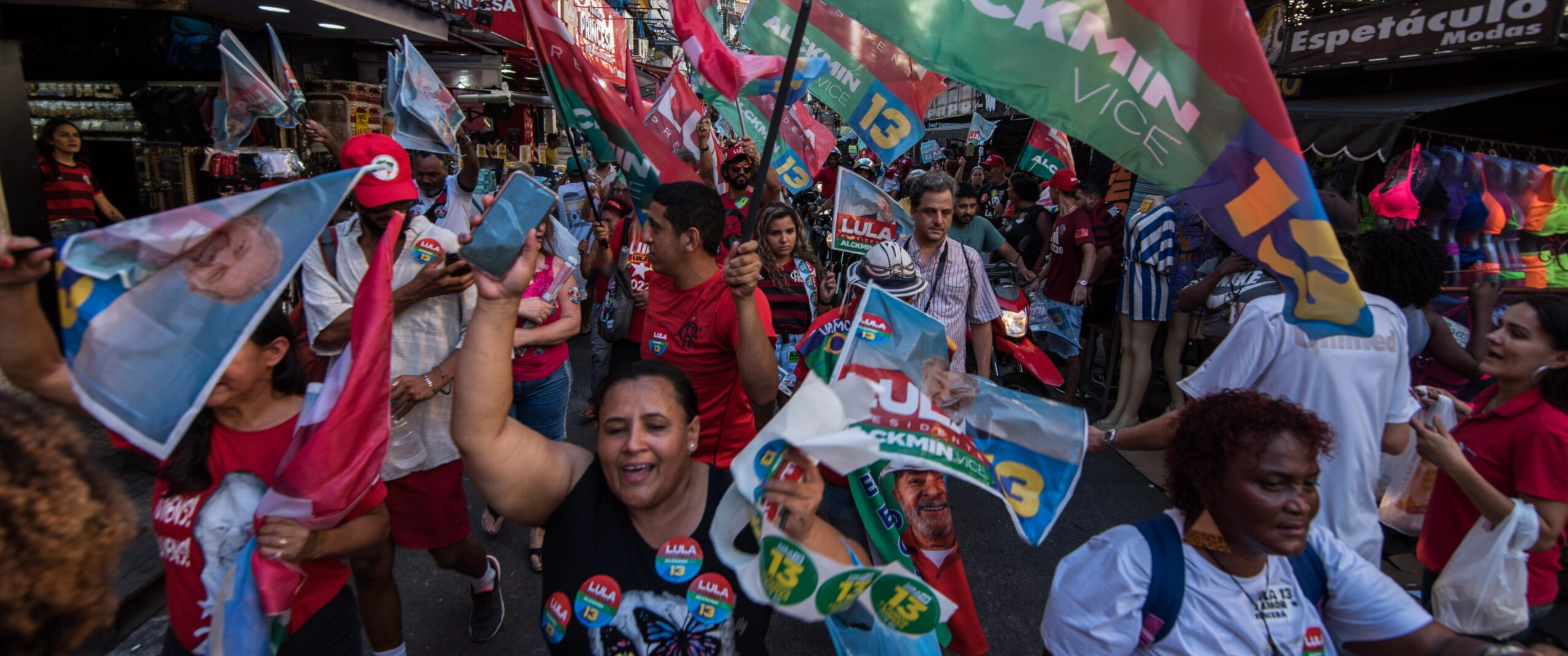
On Saturday afternoon, October 29, a few hours before the 2022 runoff presidential election, as then-candidate Lula marched along Avenida Paulista in São Paulo, Residents of Rio de Janeiro’s largest favela, Rocinha, came together for the ‘Rocinha March with Lula.’ The event was organized by community leaders, residents, and social movements in Rocinha. Participants gathered at the top of the favela at the Health Center on Rua Um and walked down the community along Estrada da Gávea and Via Ápia to the favela entrance on Caminho do Boiadeiro.
The next day, Luiz Inácio Lula da Silva (PT) was elected president with 50.9% of the national vote (60,345,999). Rocinha turned out to be the Rio neighborhood with the highest percentage of voters turning out for the now president-elect, with 78.2%.
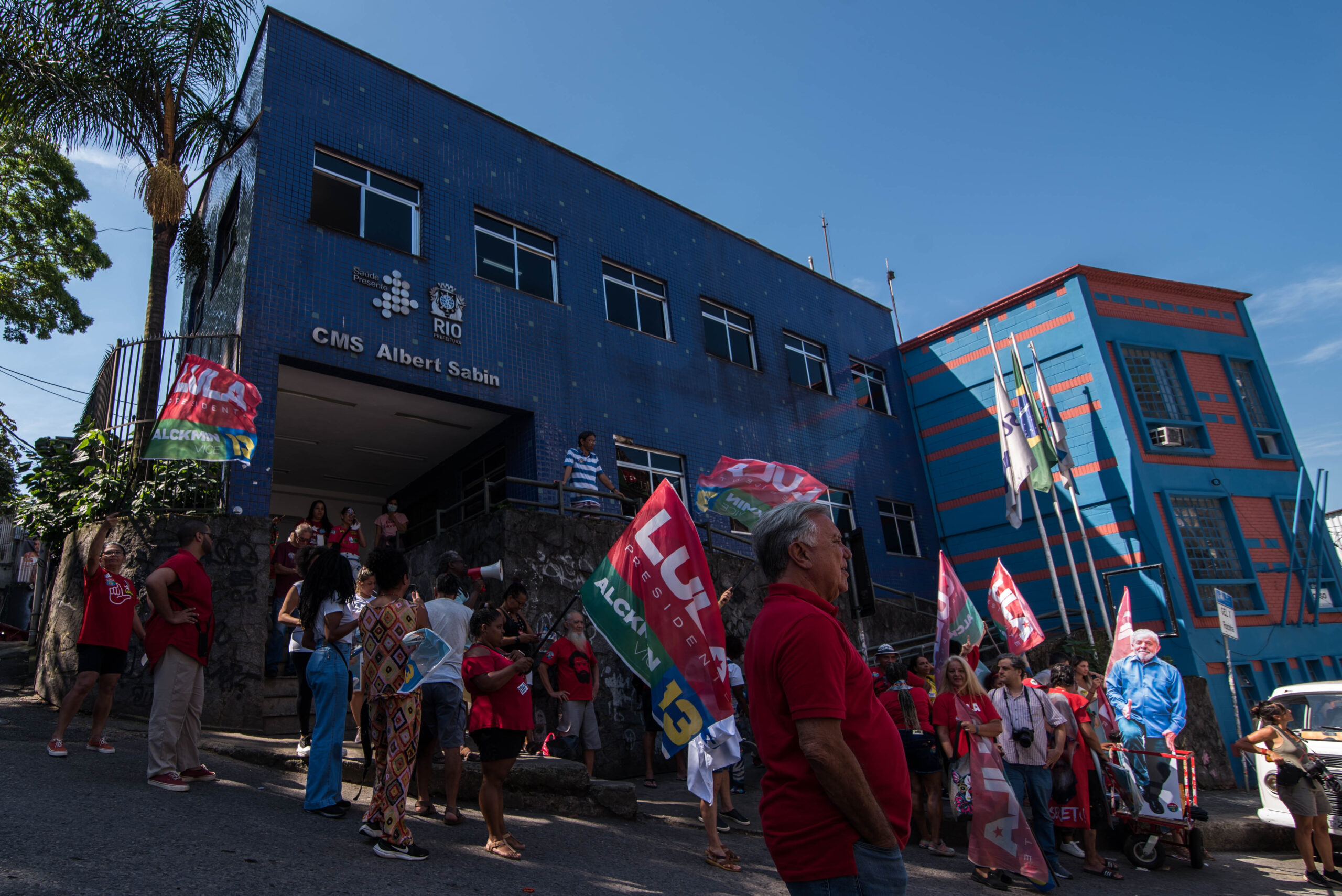
Lula was present on Rua Um via an almost life-size photo on a wagon pushed by a resident. Red flags, as well as green and yellow flags, waved in front of the Albert Sabin Municipal Health Center while a crowd of residents gathered to take part in the march.
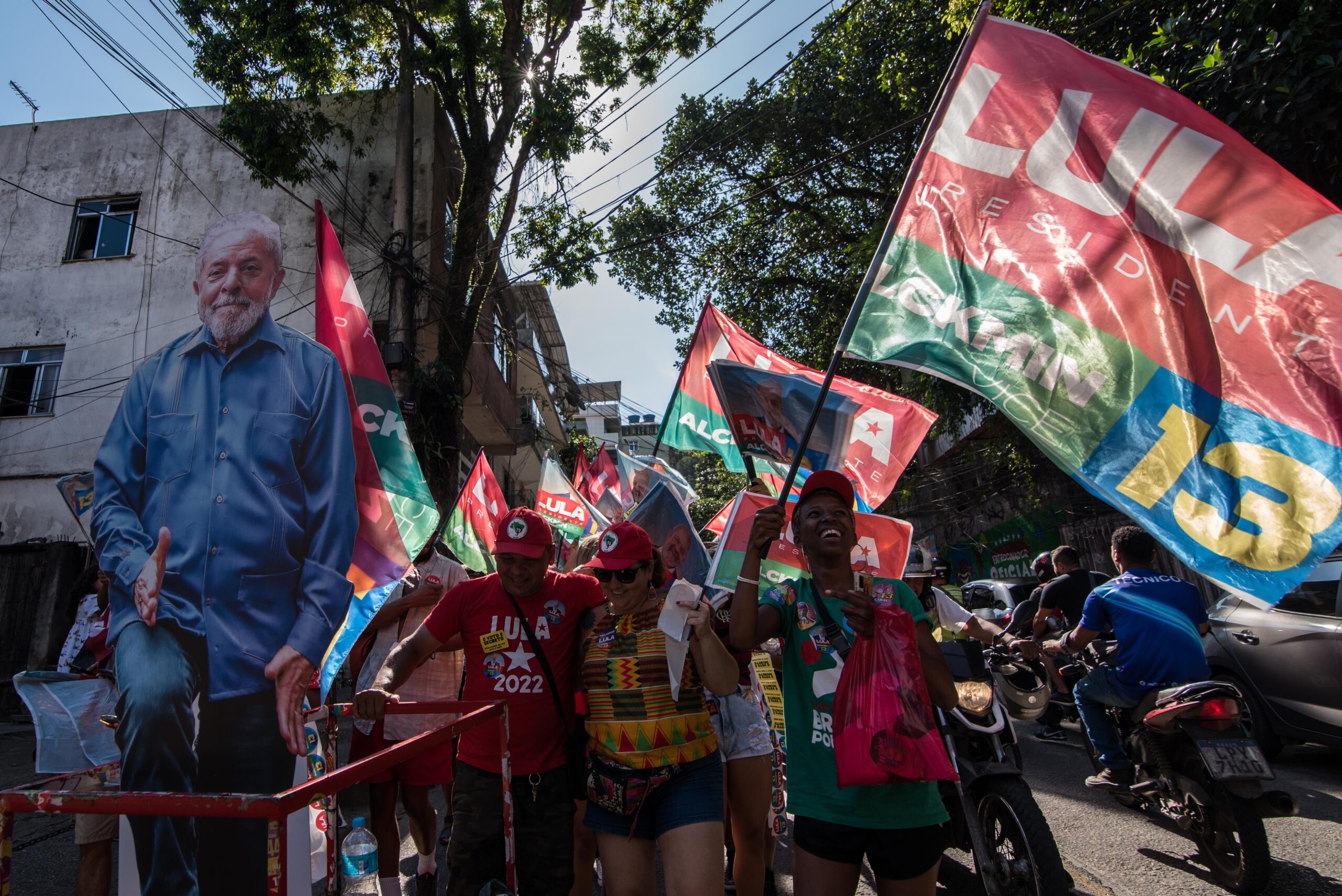
According to community leader Antonio Xaolin, known as Xaolin da Rocinha and one of the community leaders who organized the march: “the aim is to convince undecided voters, and those that don’t want to vote, to go and vote. As well as voting being a civic moment and expression of Brazilian identity, it’s also a chance to beat this authoritarian agenda. Everyone has to participate for democracy to win. In the first round, Rocinha voted 70% for Lula and now in the runoff we want 80%, 90%.”

According to O Globo, Lula received 64.08% of votes in the 211th Electoral Zone, which encompasses the neighborhoods of Gávea, Vidigal, São Conrado, Jardim Botânico and Rocinha.
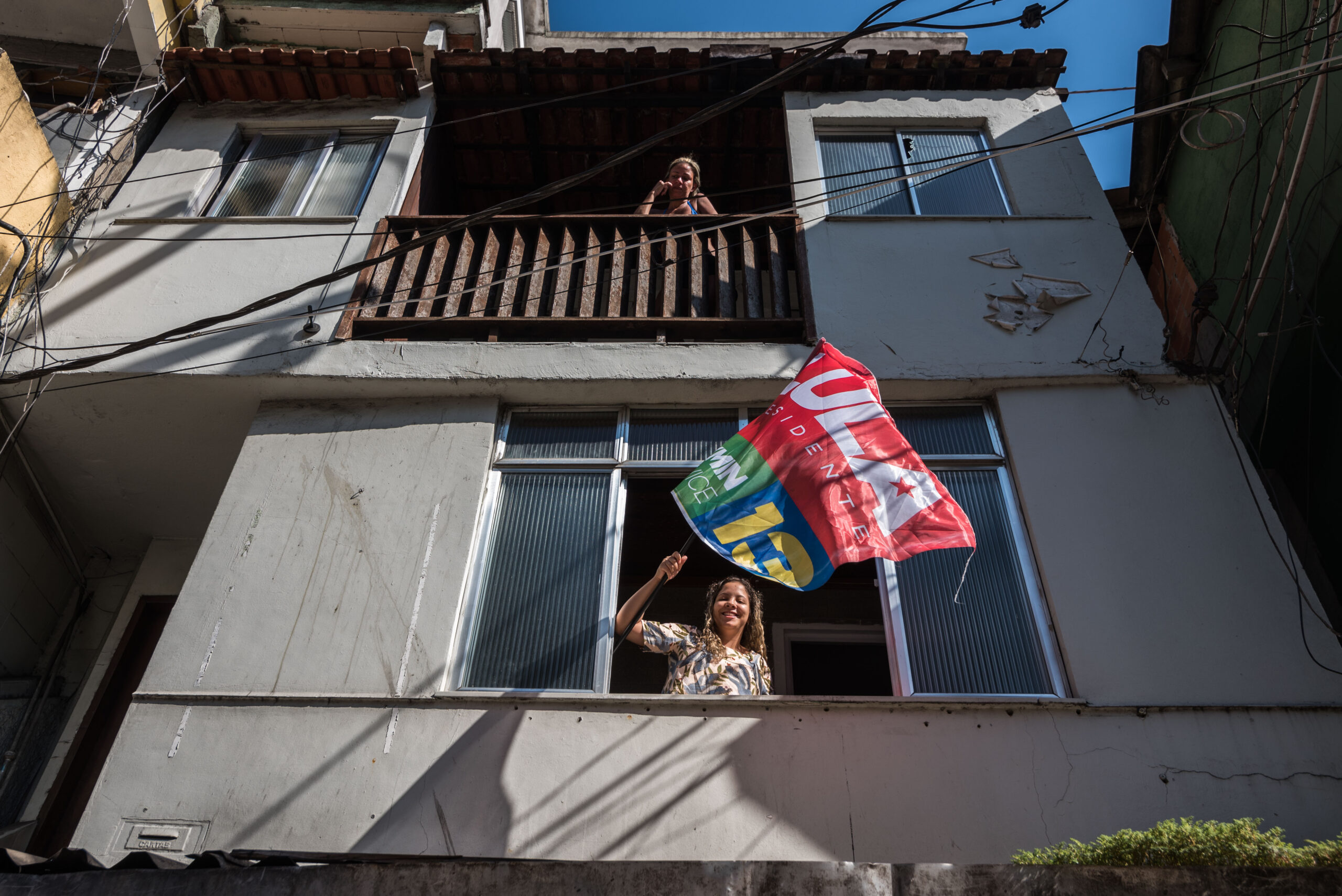
Once the sound car arrived, the march began. Going down Estrada da Gávea, a red wave cut through the favela. People showed support wherever the march passed by: in their workplaces, homes or in transit, on motorcycles, buses, cars and trucks, honking horns or making an L hand gesture in support of Lula. For those present it was clear that Rocinha was with Lula.
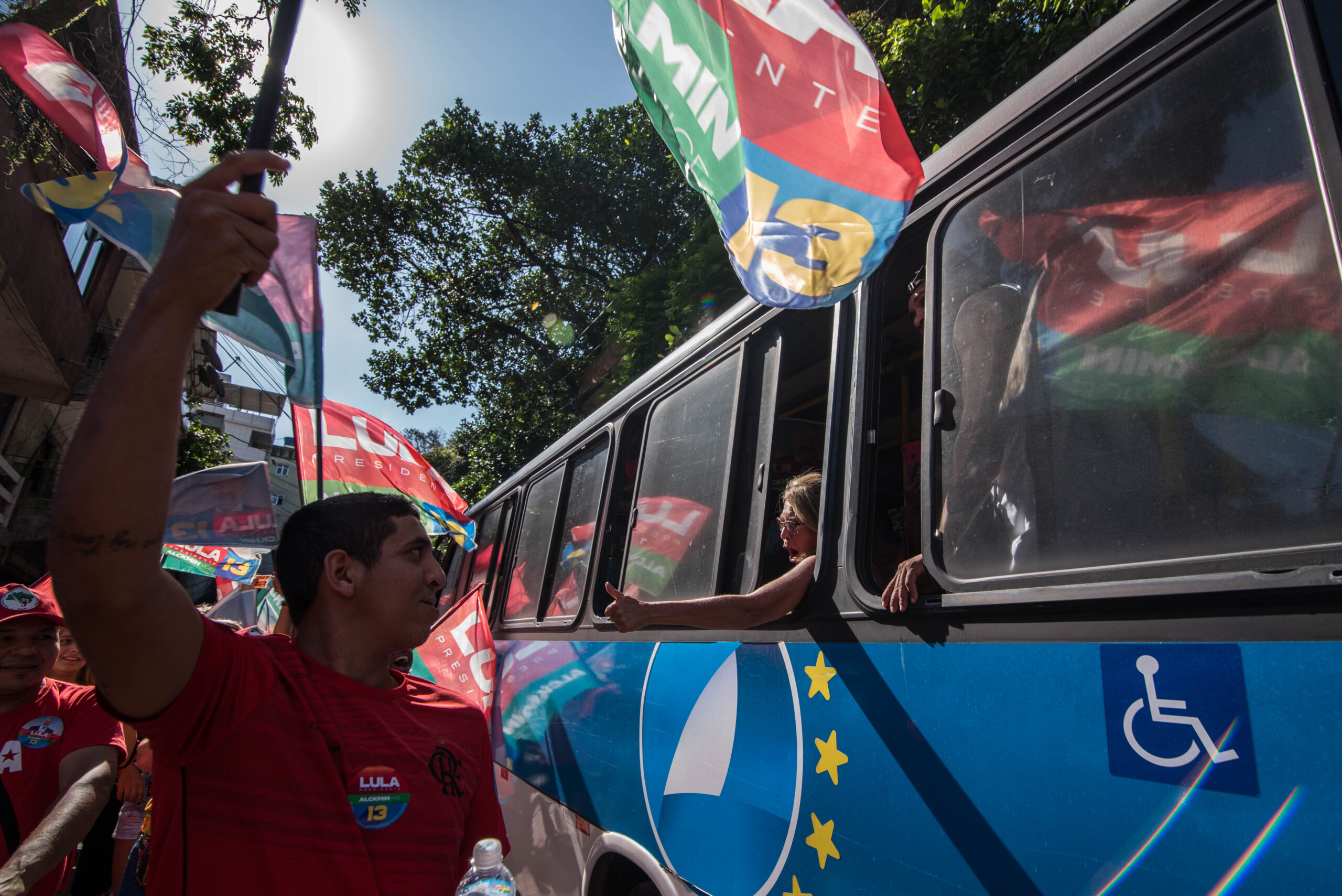
Dona Angela, a resident of the community for 20 years, came to her front door to express support for Lula. Asked about the importance of the march, she defended Lula’s legacy and his importance for Afro-Brazilians and those living in peripheral areas.
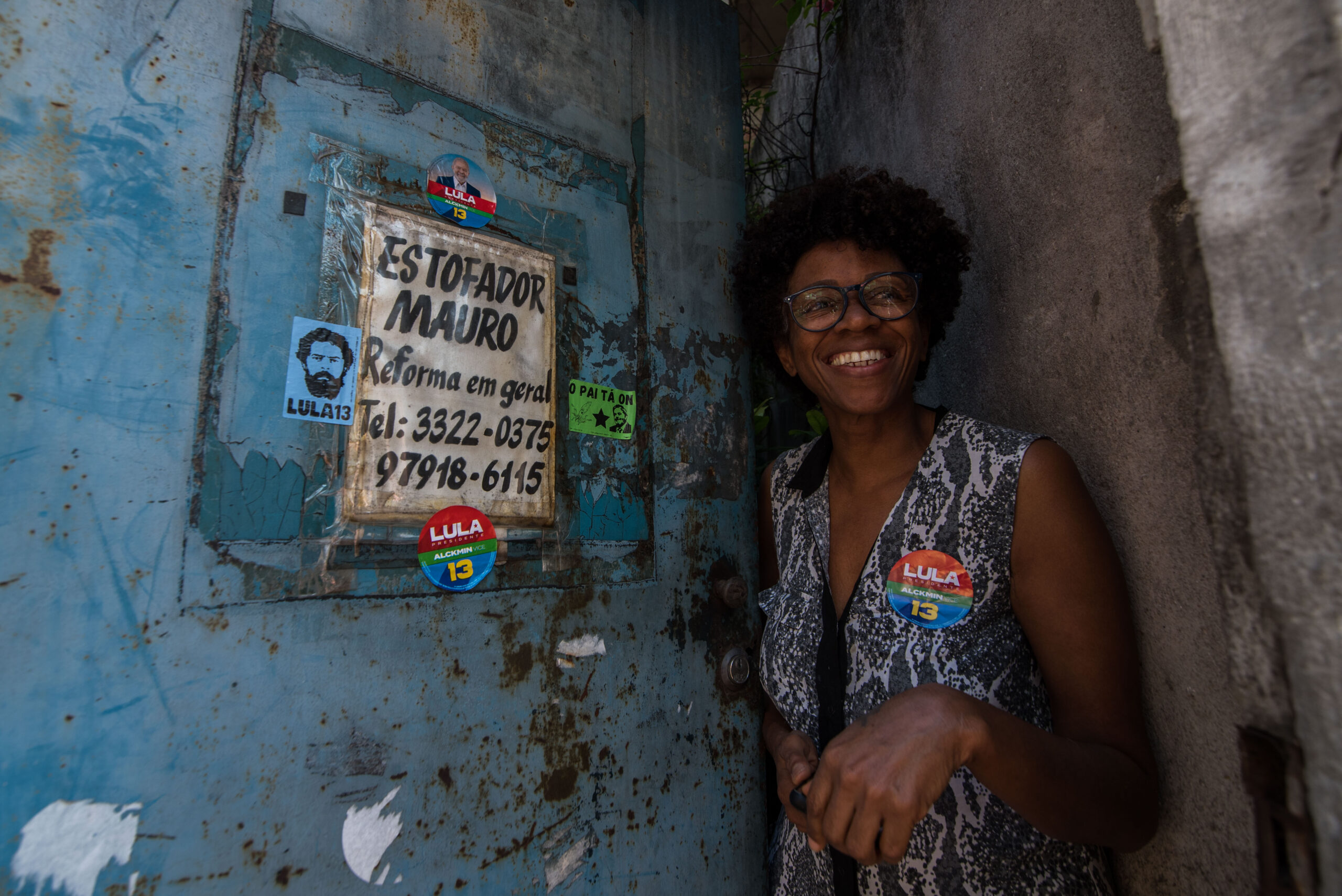
“This march is important for people on the periphery like us black people, that live with inequality, go hungry, who live in poverty. [It’s important] we be aware that only Lula will bring everything back: providing us with [access to] culture [amenities], giving us dignity and prosperity.” — Dona Angela
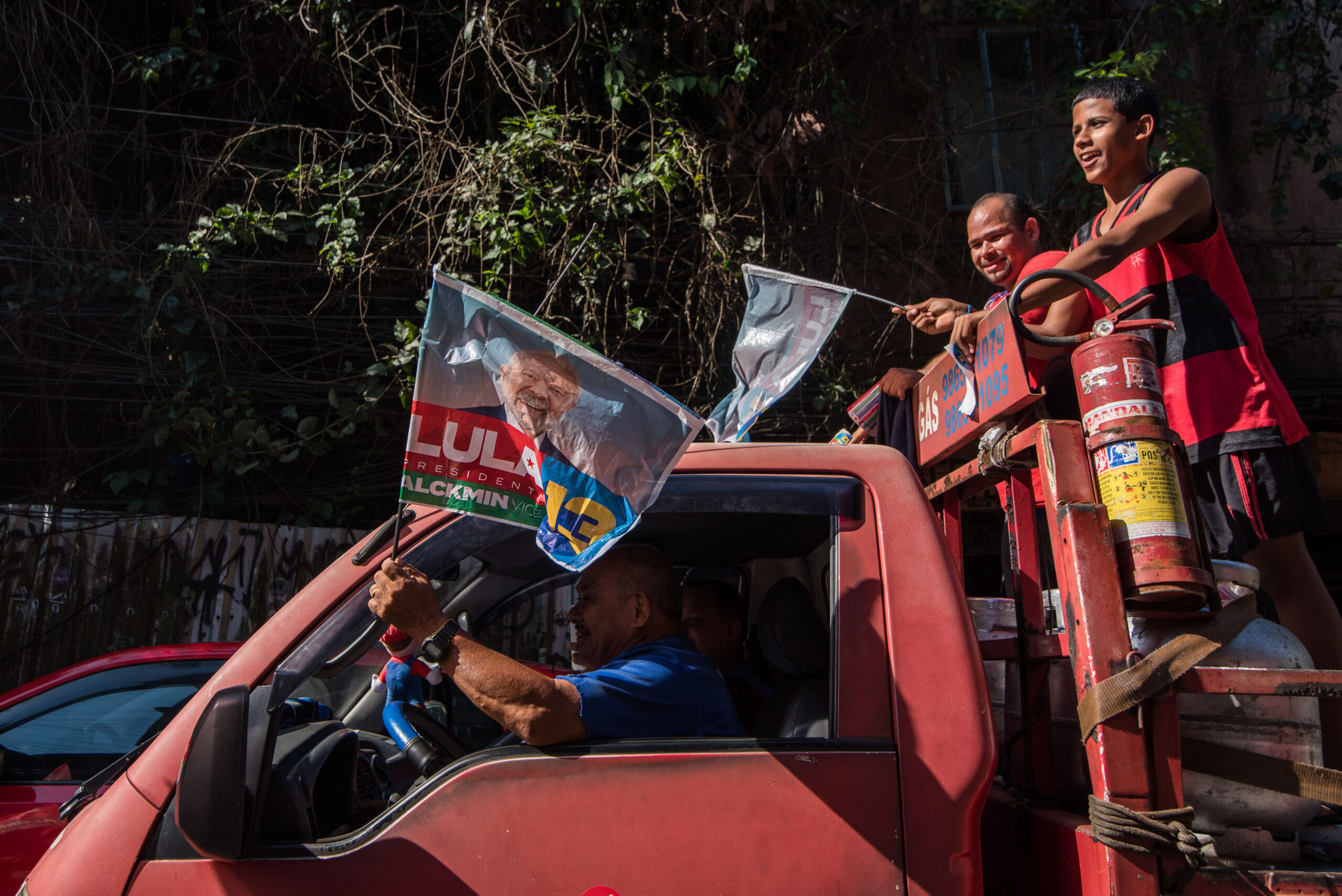
Participants in the march emphasized what Lula’s government did for the favela. During the march, the group passed several landmarks of his public policies in the community: a public housing complex, the Rocinha Park Library, the Urgent Care Unit (UPA), the pedestrian overpass, and the sports complex are all projects linked to his prior government’s Growth Acceleration Program (PAC).
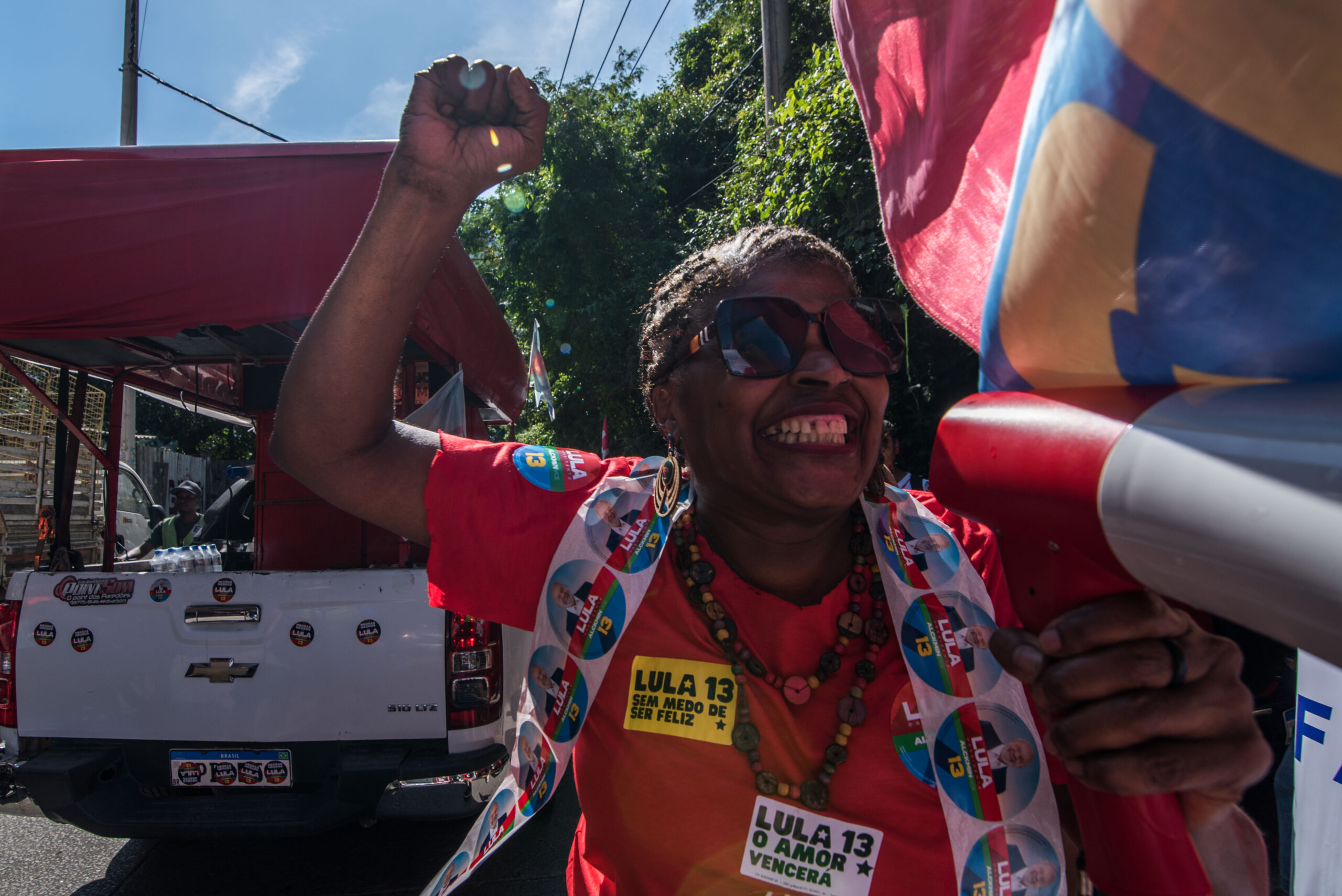
Despite criticism, participants emphasized that even with the cuts to the program, PAC brought improvements to Rocinha in housing, health, sports, and leisure.

During the march, the group passed in front of the housing complexes where speeches were made remembering past times when Lula was president.
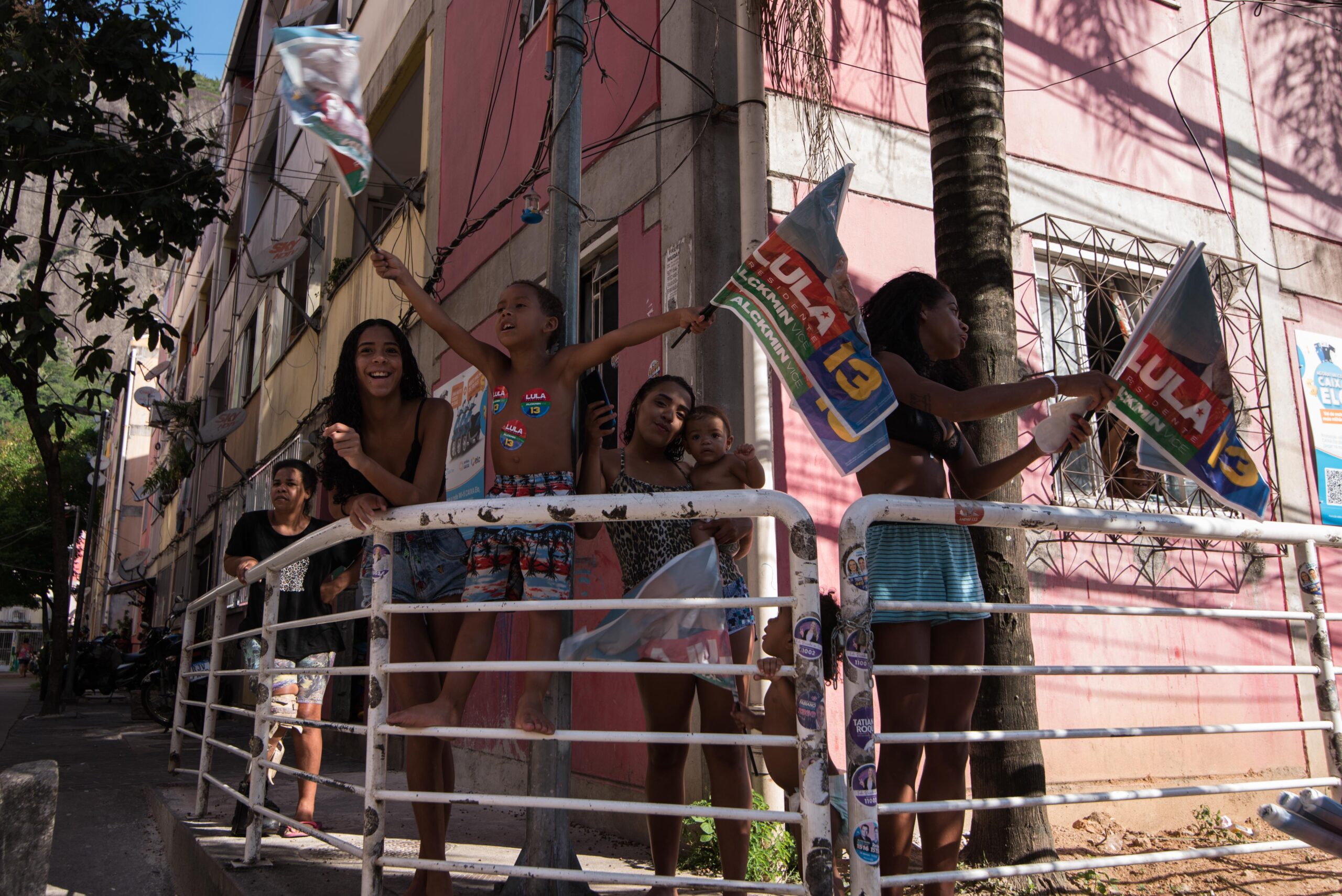
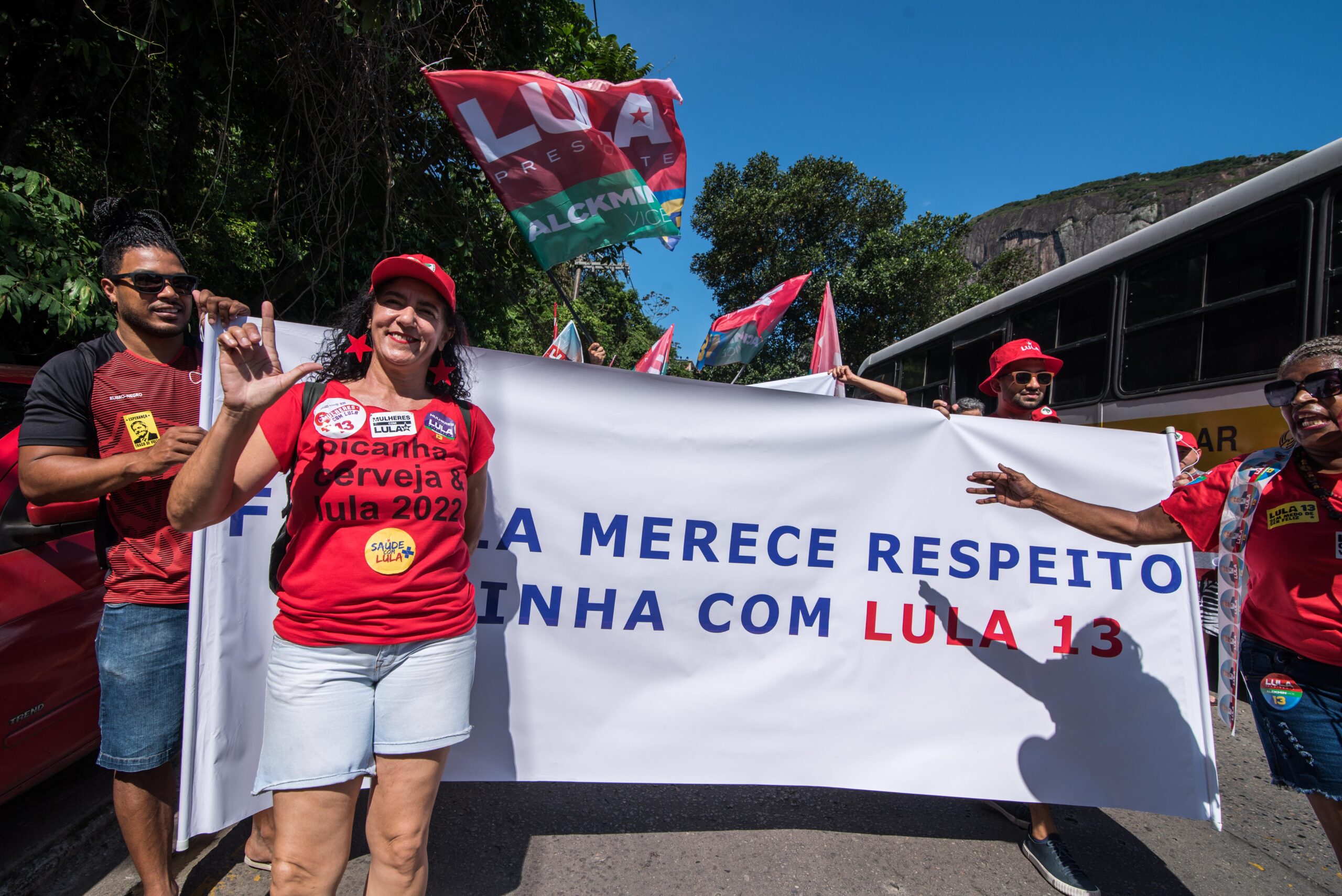
Residents made the contrast between Lula, who visited Complexo do Alemão at the invitation of local leaders, and President Jair Bolsonaro, candidate for reelection, and his campaign criminalizing the favelas.
One of the banners read: “The Favela deserves respect. Rocinha with Lula 13.” Next to the banner was recently elected state deputy Marina do MST who participated in the march making a statement:
“I think the banner says it all: people in communities, in the favelas, need respect! Through work, employment, health, strengthening the SUS [public health system]. Respect for women and children, and particularly for all mothers so they may have the opportunity and security of placing their children in high quality public schools and universities. And having healthy food on the table at least three times a day, for every family every day. I think here we have the representation and demonstration that people need to achieve their daily rights, in organized struggles… People organized in the countryside and in the city, in the fields and the favela.”
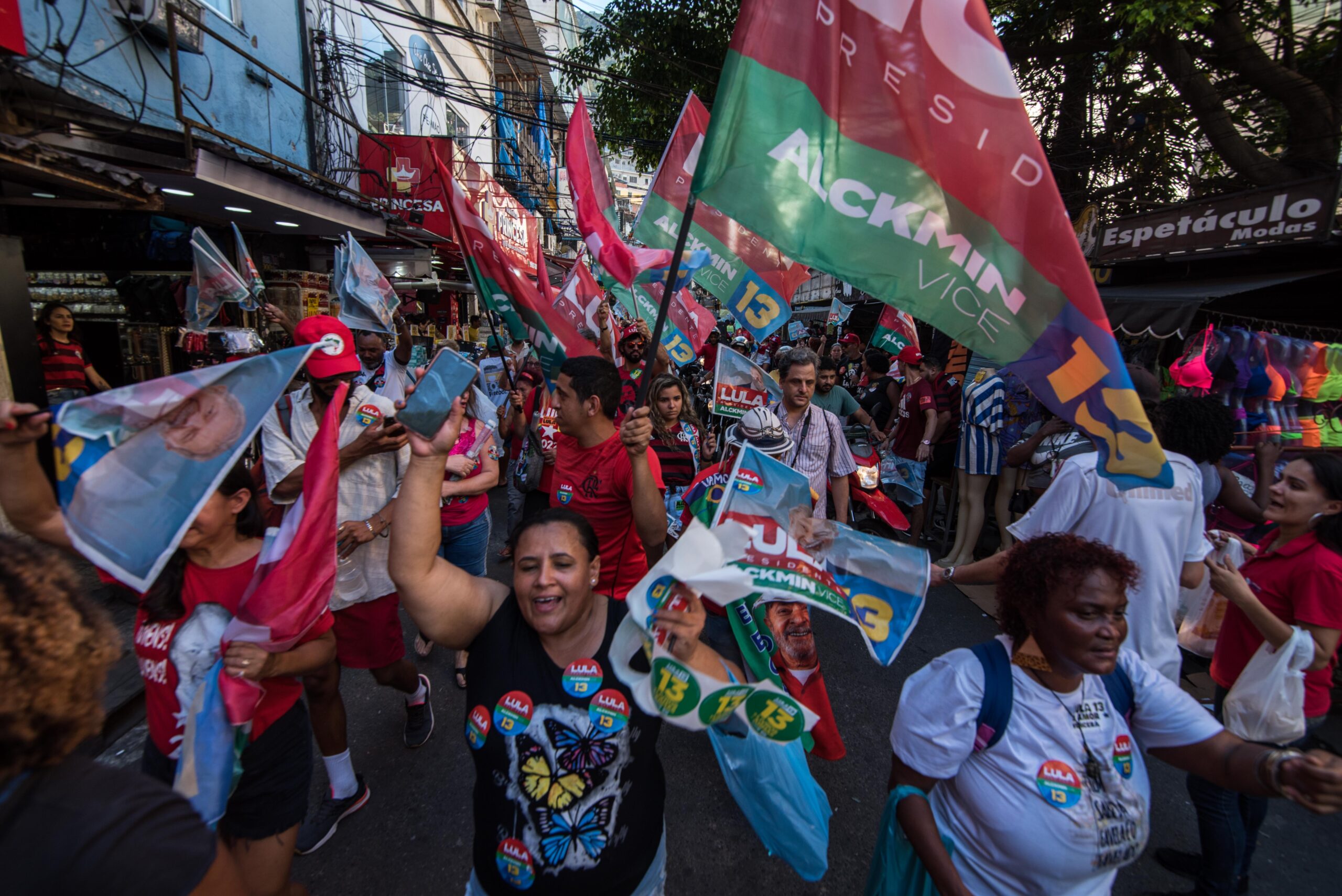
Heading towards its final point, the event arrived at Via Ápia, one of Rocinha’s main access roads. With the street fairly crowded, Antônio Firmino took the floor to speak. A community leader and one of the founders of the Sankofa Memory and History Museum in Rocinha, Firmino emphasized the importance of dialogue with relatives, friends, and neighbors.
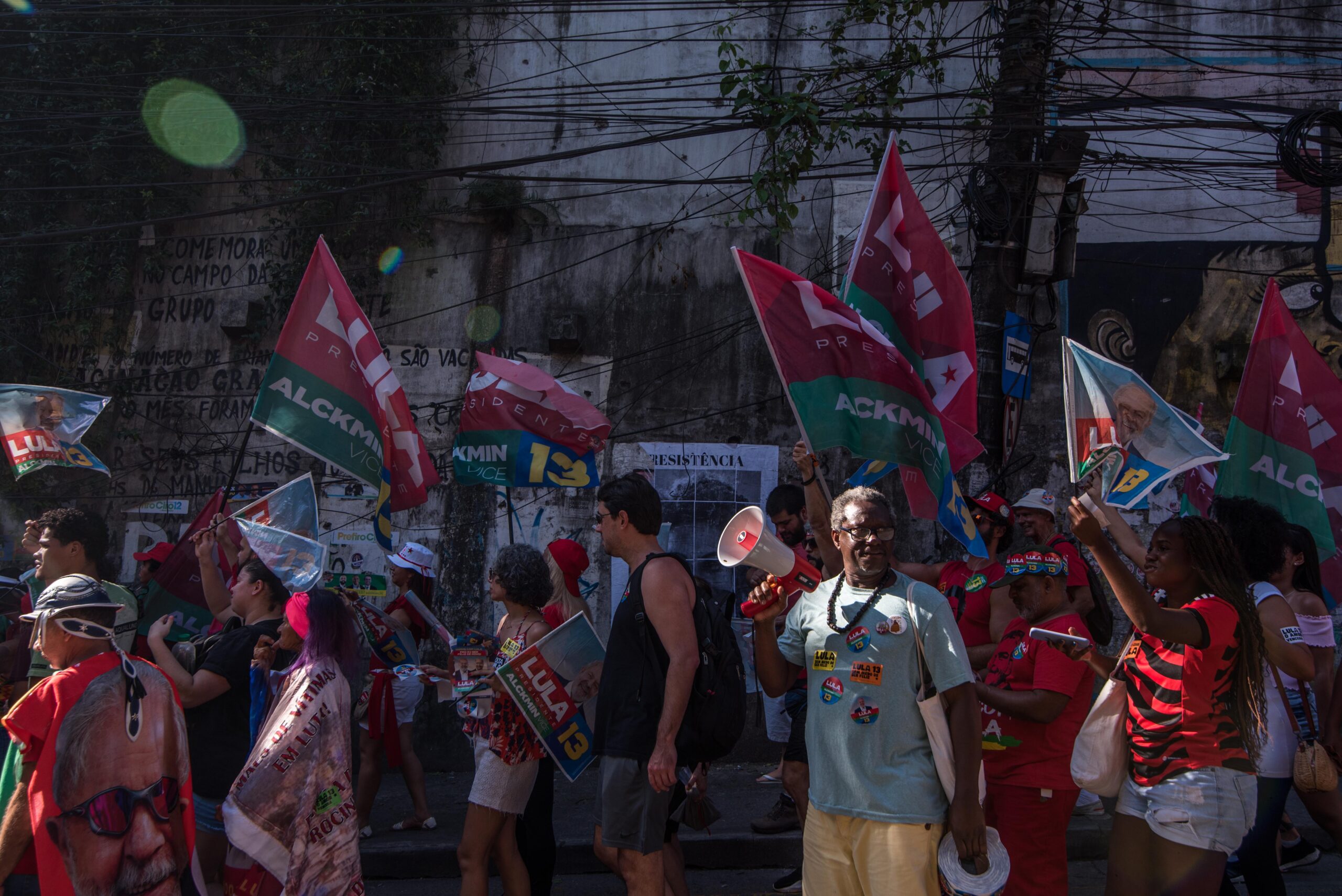
“Tomorrow, it’s important to call one more friend and get one more person to vote 13 [for Lula]. Right now it’s fundamental to elect Luiz Inácio Lula da Silva as our president. We cannot fail. Tomorrow is the day to give continuity to democracy, and [the number of] democracy [on the ballot] is 13! So it’s 13, it’s Luiz Inácio Lula da Silva that we have to elect! It’s democracy!”
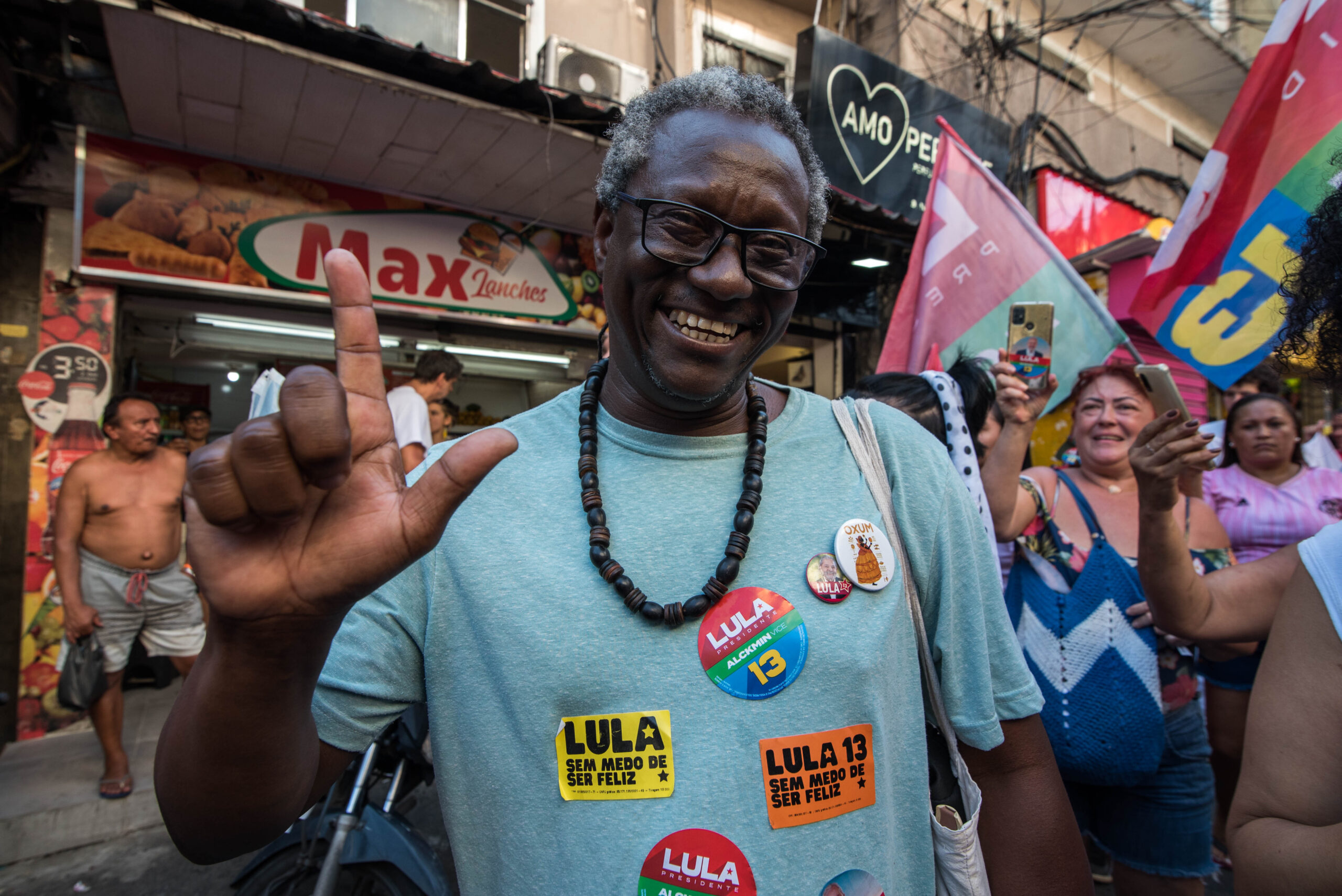
The march passed under the pedestrian overpass and ended at the entrance to Caminho do Boiadeiro. The Rocinha March with Lula made the streets lively, brought hope to those who took part and registered an important moment in the favelas’ fight for democracy.
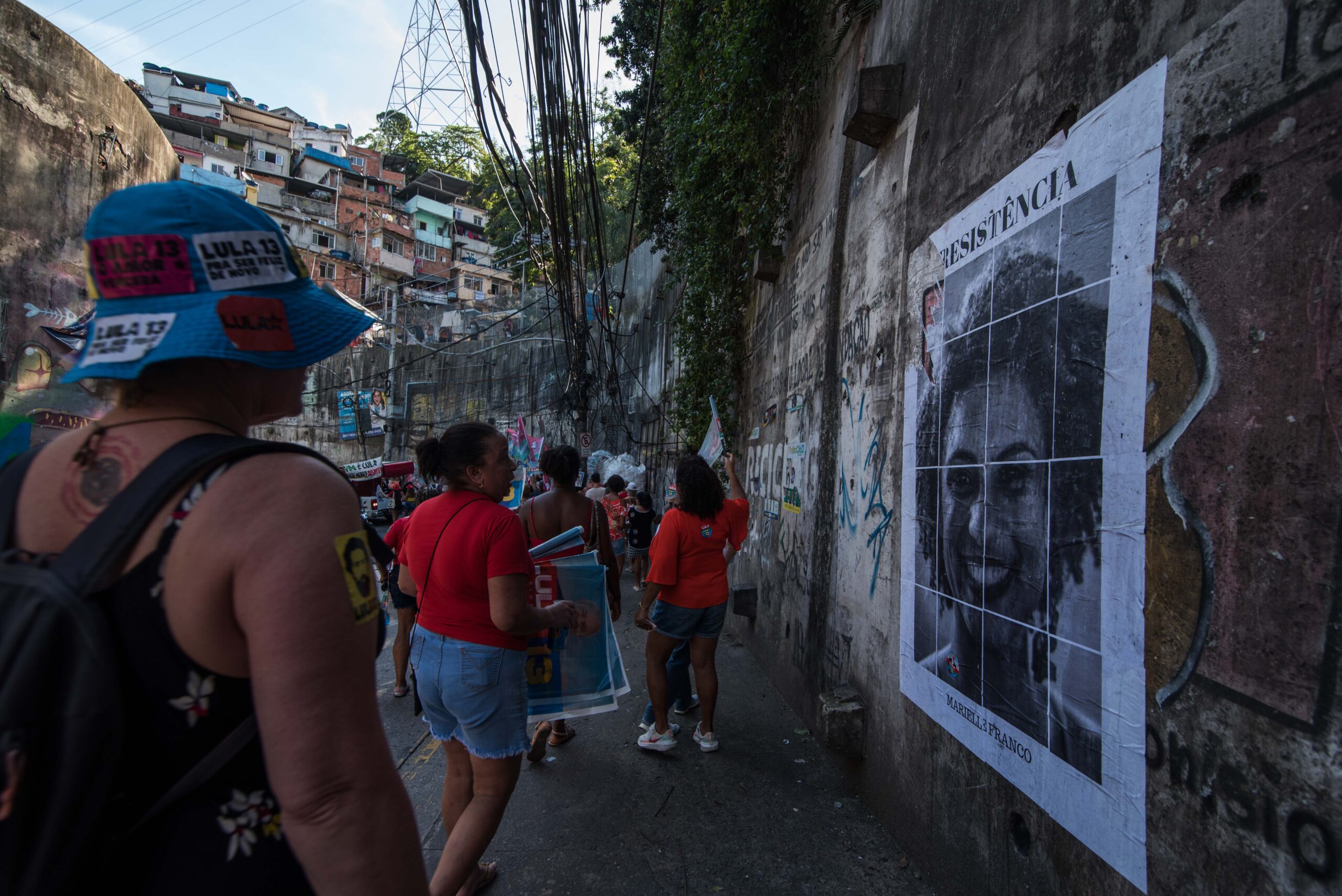
After the vote count, the election results in the area came as no surprise to the participants of the march. Rocinha was the neighborhood with the highest vote for Lula: 78.2% of the vote. Lula also won in other large favelas like Alemão, Penha, Maré, City of God, Rio das Pedras, and Gardênia Azul.
Check out more photos from the Rocinha March with Lula:
